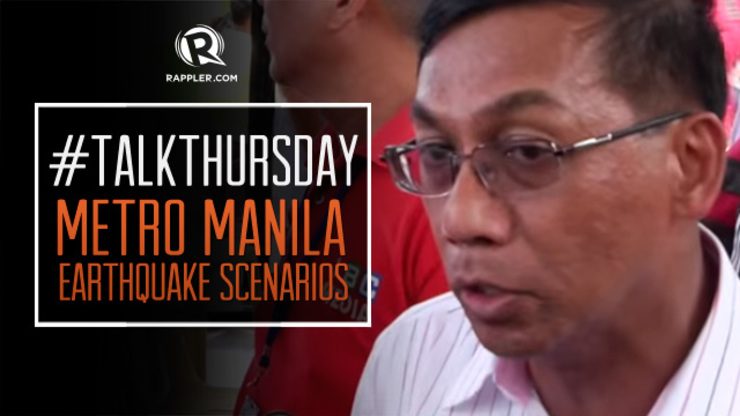SUMMARY
This is AI generated summarization, which may have errors. For context, always refer to the full article.

MANILA, Philippines – Days before the anniversary of the 1990 Luzon earthquake, Rappler talks to Dr Renato Solidum, director of the Philippine Institute of Volcanology and Seismology (PHIVOLCS), about what could happen if a 7.2-magnitude earthquake hits Metro Manila.
The Philippines’ location along the Pacific Ocean’s “Ring of Fire” makes the country a hotspot for earthquakes and other geological hazards.
Records of earthquakes in the Philippines traced to as far back as the 1600s show that tremors registering magnitude-6 and over on the Richter scale have been experienced all over the country. The strongest earthquake to hit the Philippines – at 8.7-magnitude – happened in September 1897. This occurred a day after another tremor of almost equal magnitude – 8.6 on the Richter scale – hit the same spot in the Celebes Sea area between the islands of Sulu and Basilan.
One of the most recent devastating earthquakes in recent memory happened on July 16, 1990 when 2,412 people died after a 7.8-magnitude quake hit Luzon. Cities of Baguio, Cabanatuan and Dagupan were the most affected.
More recently in October 2013, another strong earthquake with a magnitude of 7.2 hit the country, destroying historical structures in Central Visayas and leaving at least 222 dead. The last major earthquake to hit Metro Manila caused the collapse of the Ruby Tower in 1968.
Experts say Metro Manila is due for a big one.
A 2004 study conducted by the Japan International Cooperation Agency, the Metro Manila Earthquake Impact Reduction Study (MMEIRS), indicated that an earthquake hitting Metro Manila could destroy 40% of the buildings in the metropolies and kill about 34,000.
To prepare for such a situation, the city government of Manila organized an earthquake drill on July 2. The drill involved government offices, schools, hotels and hospitals along Roxas Boulevard. The drill presumed two scenarios, both expected to bring severe damage – when the West Valley Fault moves and when the Manila Trench moves. (WATCH: Is Manila prepared for an earthquake?)
But are preparations enough? Has the country learned valuable lessons from earthquakes that hit the northern and central parts of the Philippines? What should government, businesses, and ordinary people be doing to prepare for the next “big one”?
Do you know what to do in case an earthquake strikes?
Watch the interview below.
– Rappler.com
Add a comment
How does this make you feel?
There are no comments yet. Add your comment to start the conversation.